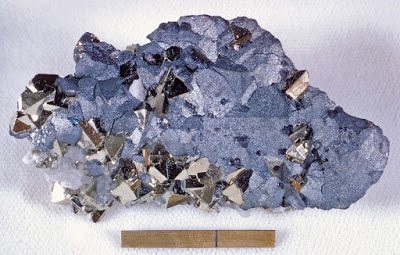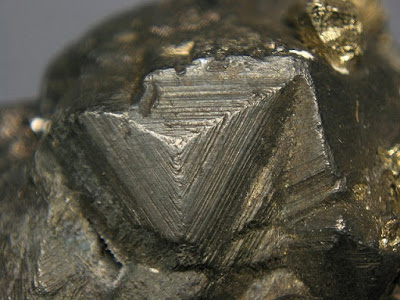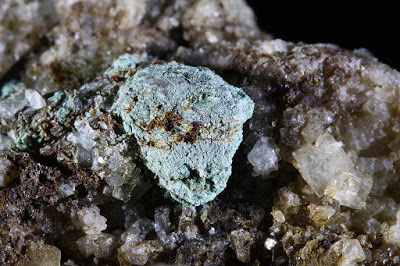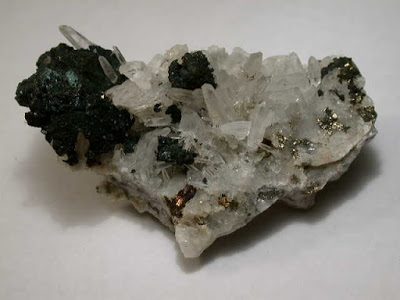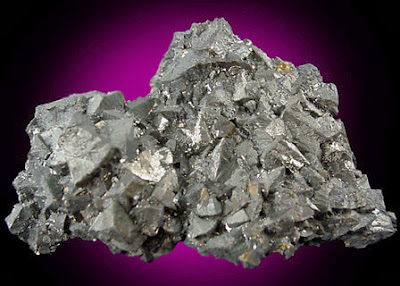
Chemical Formula: Cu9S5
Locality: In the USA, at Butte, Silver Bow Co., Montana.
Name Origin: From the Greek for “two kinds” or “sexes,” in reference to the presumed presence of both cuprous and cupric ions.
Digenite is a copper sulfide mineral with formula: Cu9S5. Digenite is a black to dark blue opaque mineral that crystallizes with a trigonal – hexagonal scalenohedral structure. In habit it is usually massive, but does often show pseudo-cubic forms. It has poor to indistinct cleavage and a brittle fracture. It has a Mohs hardness of 2.5 to 3 and a specific gravity of 5.6. It is found in copper sulfide deposits of both primary and supergene occurrences. It is typically associated with and often intergrown with chalcocite, covellite, djurleite, bornite, chalcopyrite and pyrite. The type locality is Sangerhausen, Thuringia, Germany, in copper slate deposits.
Occurrence
Digenite occurs in the transitional zone of supergene oxidation of primary sulfide ore deposits, at the interface between the upper and lower saprolite ore zones. It is rarely an important mineral for copper ores, as it is more usually replaced by chalcocite further up in the weathering profile, and is a minor weathering product of primary chalcopyrite. Natural digenite always contains a small amount of iron and is considered to be stable only in the Cu-Fe-S system.
In the Deflector and Deflector West Cu-Au lode deposits of the Gullewa Greenstone Belt, Western Australia, digenite is an important constituent of the transitional Cu-Au ore. However, it is difficult to treat metallurgically and remains a refractory ore type. In this locality digenite is found with covellite, chalcocite and bornite.
It was first described in 1844 from the type locality of Sangerhausen, Saxony-Anhalt, Germany. The name is from the Greek digenus meaning of two origins in reference to its close resemblance with chalcocite and covellite.
Physical Properties of Digenite
Cleavage: {???} Indistinct
Color: Blue, Dark blue, Black.
Density: 5.6
Diaphaneity: Opaque
Fracture: Brittle – Conchoidal – Very brittle fracture producing small, conchoidal fragments.
Hardness: 2.5-3 – Finger Nail-Calcite
Luster: Sub Metallic
Streak: grayish black
Photos
